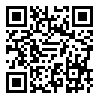BibTeX | RIS | EndNote | Medlars | ProCite | Reference Manager | RefWorks
Send citation to:
URL: http://hakim.tums.ac.ir/article-1-973-en.html
Habibi R1 * (MSc), Karshky H2 (Ph.D), Dashtgard A3 (MSc), Heidary A4 (Ph.D), Talaei A5 (Ph.D)
1 Department of Emergency Medicine, School of Para Medicine, Qazvin University of Medical Sciences, Qazvin, Iran
2 Faculty of Psychology, Mashhad Ferdowsi University
3 Faculty of Nursing and Midwifery School, Ghaen
4 Nursing and Midwifery School, Mashhad University of Medical Sciences, Mashhad, Iran
5 Psychiatry and Behavioral Sciences Research Center, Ibn-e-Sina Hospital,
Faculty of Medicine, Mashhad University of Medical Sciences, Mashhad, Iran
Received: 29 May 2011, Accepted: 23 Apr 2012
Abstract
Introduction : Addiction is a major health problem worldwide. Regarding young population in Iran, about 44 million individuals are at risk for addiction. Studies have shown that the self-efficacy is a main predictor of health behaviors. The aim of this study was to study validity and reliability of the Bramson’s quit addiction self-efficacy questionnaire.
Methods: After doing translation-back translation processes, the questionnaire along with the general self-efficacy questionnaire were completed by 150 addicted clients who were selected randomly from the rehabilitation and treatment Mehr and Piroozi addiction clinics in mashhad. The reliability was calculated using the Cronbach's alpha coefficient.
Results: Pearson correlation coefficient showed that there was high correlation between the two questionnaires (general self-efficacy and Bramson’s quit addiction self-efficacy r=0.67 p<0.001). Factor structure of the questionnaire was confirmed using the confirmatory factor analysis. The Cronbach's alpha was 0.90. The results of the factor analysis identified four factors: problem-solving skills, decision making, assertiveness, and communication (The alphas were between 0.72 and 0.78).
Conclusion: The validity and reliability of the questionnaire seemed to be appropriate.
Key words: validity, reliability, addiction, self-efficacy
Please cite this article as follows:
Habibi R, Karshky H, Dashtgard A, Heidary A, Talaei A . Validity and Reliability of the Bramson’s Quit Addiction Self-Efficacy Questionnaire. Hakim Research Journal 2012 15(1): 53- 59
* Corresponding Author: Qazvin University of Medical Sciences, School of Para Medicine, Department of Emergency Medicine Qazvin, Iran. Post Code: 3431935377. Tel: +98- 938- 1563755, E-mail: Habibir881@mums.ac.ir
Received: 2012/06/2 | Published: 2012/04/15
| Rights and permissions | |
 |
This work is licensed under a Creative Commons Attribution-NonCommercial 4.0 International License. |





